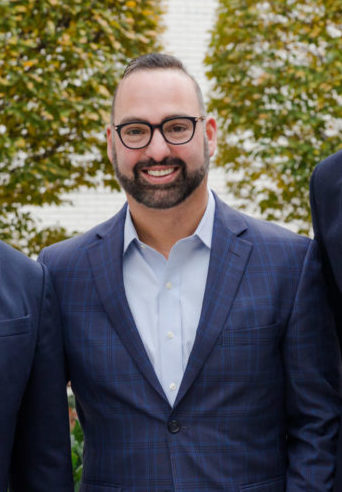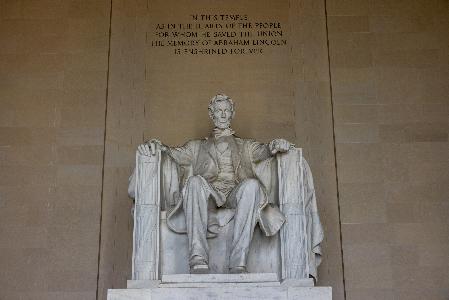
This editorial article is a part of Web3 Month of Technical.ly's 2022 editorial calendar.
Creating a brand-new cryptocurrency. Voting by blockchain. Building a virtual reality workspace.
Here at Technical.ly, we’ve dedicated a whole month to reporting on the world of Web3, the term for the decentralized third iteration of the internet involving blockchain technology, NFTs and the like. But even after giving you the 411 on all the cool stuff happening now, there’s still plenty to come in the Web3 space — some of which we’re still trying to wrap our brains around, tbh.
And we’re still pretty hype about what’s coming down the pike. To help break it down, we asked four local technologists what they think is next in Web3.
Cenk Sidar, CEO, Enquire.ai

Cenk Sidar (Courtesy photo)
When it comes to Web3 and the metaverse, Sidar thinks a key metric in developing the technology is collaboration. With metaverse tech, he said, people can bring back water cooler conversations in remote work and bring together hundreds of people across the globe. That, he thinks, will lead to new and interesting innovation.
“I believe those connecting technologies may solve a large portion of the problem, especially if they will be hybrid solutions, some people working from home, some people working at the office and some people work and meet at the metaverse certain days of the week,” Sidar said. “So I would like a mix of a little bit of everything in the future, XR and AI and, of course, the blockchain technologies.”
Roselle Safran, CEO, KeyCaliber

Roselle Safran. (Courtesy photo)
For Safran, a cybersecurity professional, the development of Web3 means both more opportunities and more challenges. Looking at how the industry has evolved, she said, from protecting networks to endpoints to mobile devices and, finally, internet of things, technology is always growing and always adding new risks. So it will mean more evolution and work from cyber professionals, and potentially, more creativity.
“From a cybersecurity standpoint, we have to keep up with whatever is happening in the real world,” Safran said. “So with whatever is happening on the Web3 side that’s new and novel, it’s going to be creating the risks because there are plenty of very crafty cybercriminals who will figure out a way to exploit whatever is new.”
Afua Bruce, author, “The Tech That Comes Next”

Afua Bruce. (Courtesy photo)
Bruce, former DataKind chief program officer and executive director of the White House’s National Science and Technology Council, sees lots of opportunities for growth and potential in Web3. But she’s not quite sure we’re there yet.
“Part of me is tempted to say, well, did we fix Web2? Have we fixed all of those issues before we go to Web3?” Bruce said. “I think right now there’s just a lot of, I’d say, potential.”
Potential, though, also means there’s room for improvement as something is being built, especially when it comes to the equity lens Bruce brings to her work. And as people explore blockchain, cryptocurrency and any other Web3 tech, she urges everyone to take a moment to ask a few questions of the space as it’s being created.
“Are we centering people? Are we centering what people need? Are we actively minimizing harms or just creating better solutions? And are we doing it in ways that actually include people and don’t exclude or exploit people?” Bruce said. “I think those are some of the questions that remain open for Web3 technologies. And I think before we can have sort of wide-scale, mass adoption, those are some of the questions that we need to answer.”
Tom Cotten, CEO, Scrypted
As he builds his startup for digital assets of the metaverse, Cotten thinks Web3 boils down to one main concept (although to clarify, he’s not so sure it exists yet).
“The idea of Web3 is about your digital identity and your ownership of it and you as a user having rights and powers on other people’s platforms,” Cotten said. “That’s Web3 to me because right now, I have a digital identity specific to each service I use.”

Tim Cotten. (Photo via Linkedin)
What that means for Cotten, he said, is instead of reading and agreeing to multiple legal statements for every platform, are open standards about digital identity that make it easier to interact with web platforms. That could look like a series of checkboxes of permissions the users agrees to, or AI assistance. But it’s something that will take time.
“We’ve got a decade-long process in front of us at the minute,” Cotten said. “I think we’re going to see new ideas start coming up and what I’m talking about, we’ll see that start happening. But adoption takes time and it’s going to take killer apps. What really moves things in our industry is people coming up with something that’s really slick and really cool-looking, and people adopt it.”
Join the conversation!
Find news, events, jobs and people who share your interests on Technical.ly's open community Slack

DC daily roundup: Inside UMCP's new ethical AI project; HBCU founder excellence; a big VC shutters MoCo office

DC daily roundup: Esports at Maryland rec center; High schoolers' brain algorithm; Power data centers with coal?

DC daily roundup: Tyto Athene's cross-DMV deal; Spirit owner sells to Accenture; meet 2GI's new cohort

